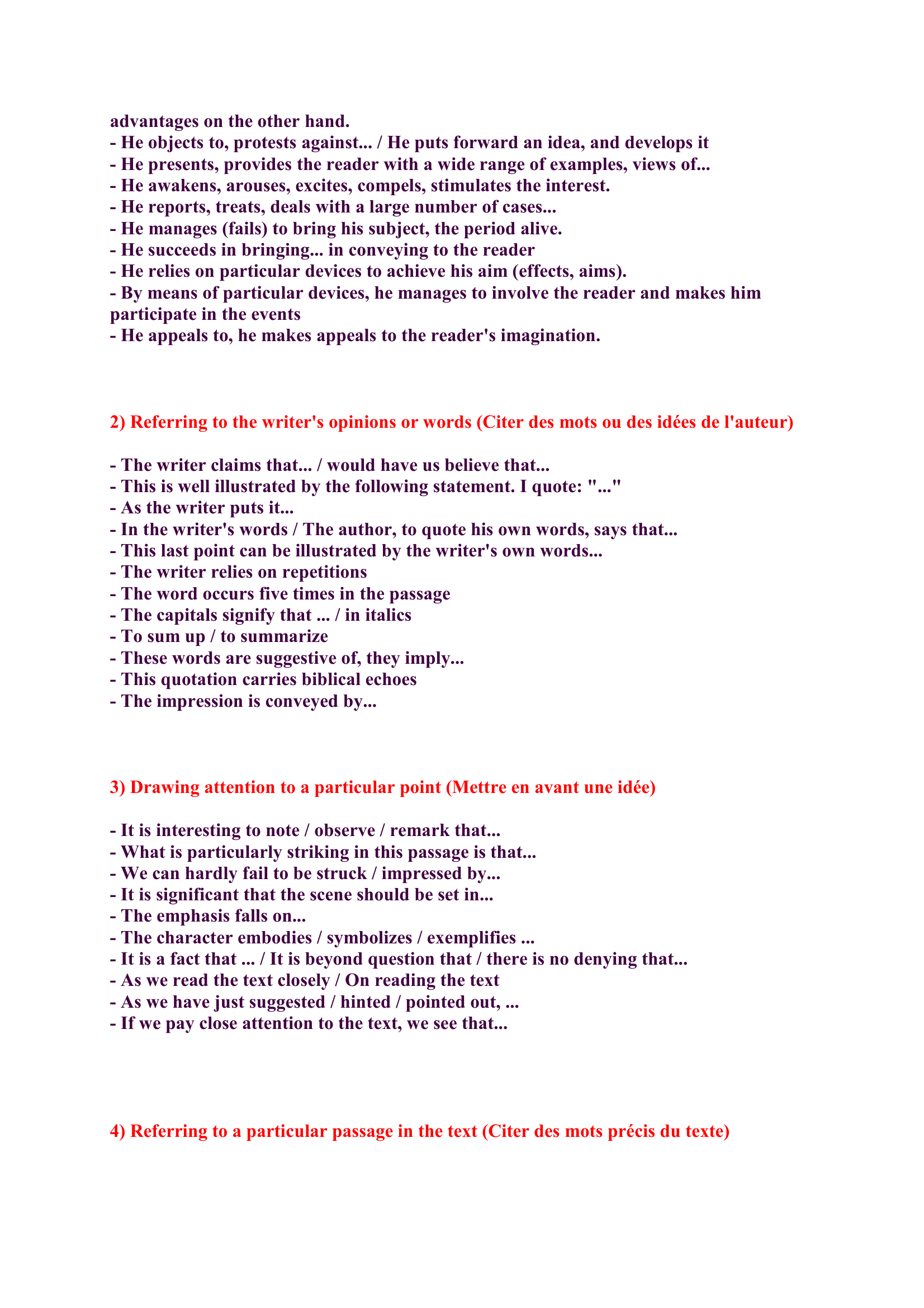SAVOIR PRESENTER SON TEXTE This document is an extract from....
Publié le 05/04/2015

Extrait du document
«
advantages on the other hand.
- He objects to, protests against...
/ He puts forward an idea, and develops it
- He presents, provides the reader with a wide range of examples, views of...
- He awakens, arouses, excites, compels, stimulates the interest.
- He reports, treats, deals with a large number of cases...
- He manages (fails) to bring his subject, the period alive.
- He succeeds in bringing...
in conveying to the reader
- He relies on particular devices to achieve his aim (effects, aims).
- By means of particular devices, he manages to involve the reader and makes him
participate in the events
- He appeals to, he makes appeals to the reader's imagination.
2) Referring to the writer's opinions or words (Citer des mots ou des idées de l'auteur)
- The writer claims that...
/ would have us believe that...
- This is well illustrated by the following statement.
I quote: "..."
- As the writer puts it...
- In the writer's words / The author, to quote his own words, says that...
- This last point can be illustrated by the writer's own words...
- The writer relies on repetitions
- The word occurs five times in the passage
- The capitals signify that ...
/ in italics
- To sum up / to summarize
- These words are suggestive of, they imply...
- This quotation carries biblical echoes
- The impression is conveyed by...
3) Drawing attention to a particular point (Mettre en avant une idée)
- It is interesting to note / observe / remark that...
- What is particularly striking in this passage is that...
- We can hardly fail to be struck / impressed by...
- It is significant that the scene should be set in...
- The emphasis falls on...
- The character embodies / symbolizes / exemplifies ...
- It is a fact that ...
/ It is beyond question that / there is no denying that...
- As we read the text closely / On reading the text
- As we have just suggested / hinted / pointed out, ...
- If we pay close attention to the text, we see that...
4) Referring to a particular passage in the text (Citer des mots précis du texte).
»
↓↓↓ APERÇU DU DOCUMENT ↓↓↓
Liens utiles
- Explication de texte de Freud et la religion: le désir humain de savoir
- Préface du Gai Savoir de Nietzsche, commentaire de texte
- Explication de texte : Veux-tu savoir ce que sont le beau et le juste selon la nature ? Platon
- ANALYSER UN DOCUMENT PEDAGOGIQUE DISPOSER D'UNE GRILLE D'ANALYSE I) TEXTE OFFICIEL II) CONSEIL METHODOLOGIQUE Retour au sommaire général I - TEXTE OFFICIEL : Pour consulter le texte officiel.
- PRÉSENTATION ARTICLE an extract from : un extrait de an analysis :


